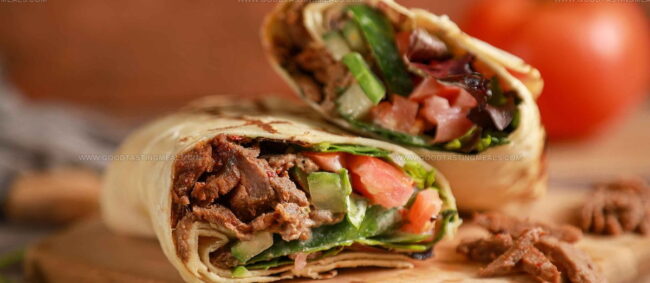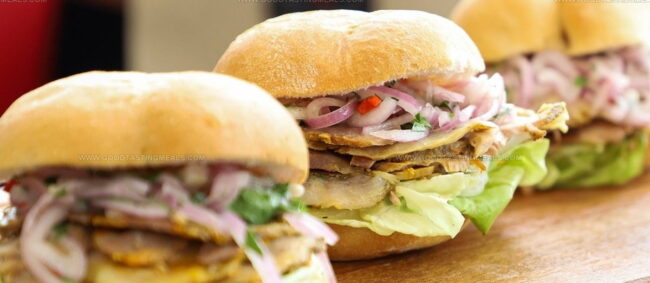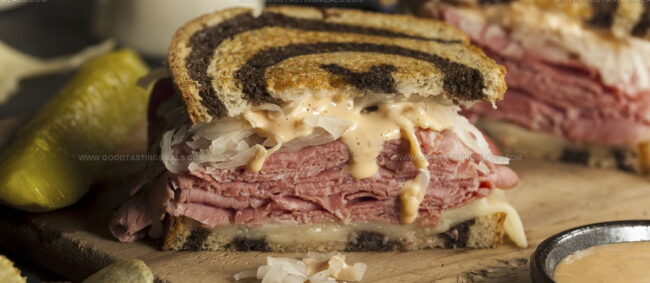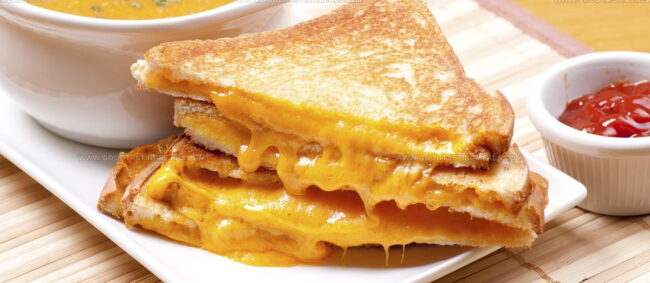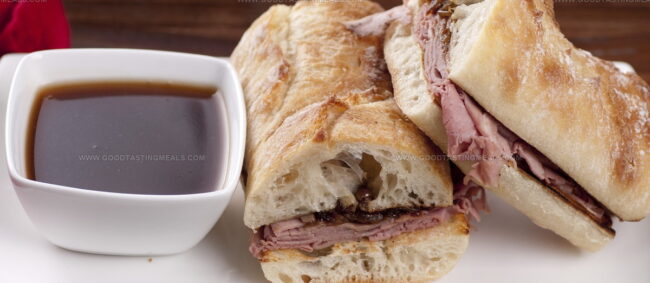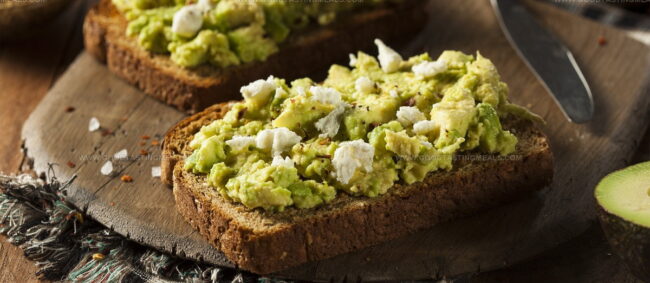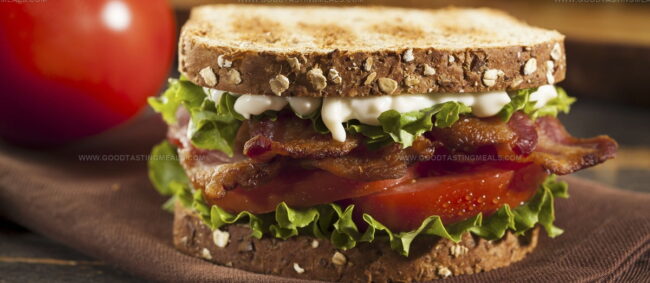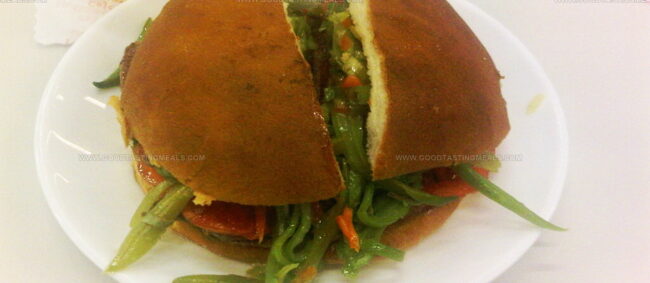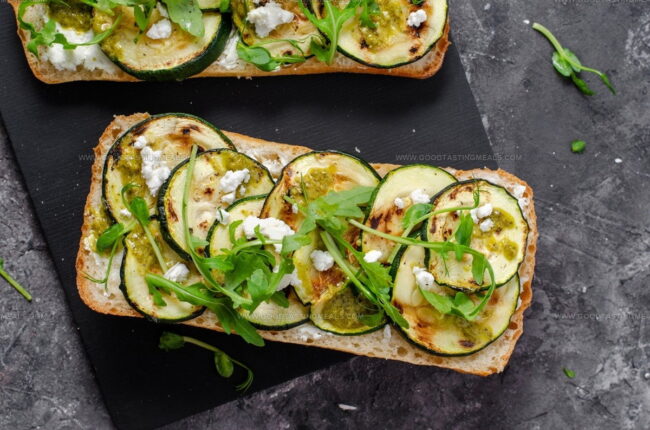23 Lip-Smacking Sandwich Recipes You Need Right Now
Sandwiches represent a culinary canvas where creativity meets convenience, transforming simple ingredients into delectable masterpieces.
Bread acts as the foundation for endless flavor combinations that can satisfy any craving or dietary preference.
Versatile and quick to assemble, these handheld meals have become a global favorite for people seeking delicious, portable nutrition.
Layering ingredients between slices allows home cooks to experiment with textures, temperatures, and taste profiles that surprise and delight.
From classic comfort food to gourmet innovations, sandwiches transcend cultural boundaries and offer something for every palate.
Remarkable sandwich crafting requires understanding balance, proportion, and complementary flavor dynamics that elevate a basic meal into an extraordinary experience.
The art of sandwich making combines technique, imagination, and personal expression in ways that continually reinvent this beloved food category.
Your culinary adventure awaits with these 23 essential sandwich recipes that will revolutionize your approach to mealtime:
What Are the Essential Sandwich Recipes Everyone Loves?
The sandwich has universal appeal, and these recipes highlight why. Layered with classic fillings or inventive twists, there’s something here for every craving and occasion.
Shawarma
Shawarma is a mouthwatering Middle Eastern street food featuring marinated meat slow-roasted on a vertical spit until crispy and tender.
Lebanese chefs perfect this dish by creating a complex marinade with seven signature spices like coriander, black pepper, and cinnamon.
Olive oil, garlic, vinegar, and lemon juice enhance the meat's deep flavor profile.
Meat options typically include chicken, lamb, or beef sliced thin and wrapped in soft pita bread.
Traditional preparation requires up to two days of careful marinating and slow roasting.
Global food lovers have embraced shawarma as a popular international street food.
Fresh vegetables and tangy sauces often accompany the meat, creating a satisfying meal.
Tombik Doner
Tombik doner represents a mouthwatering Turkish street food featuring succulent meat nestled inside thick, pillowy bread.
Lamb or beef roasted on a vertical rotisserie forms the core of this hearty sandwich, sliced thin and seasoned with aromatic spices.
Chefs carefully prepare the special round tombik bread to cradle the hot, juicy meat perfectly.
Roasted green peppers, tomatoes, and onions add fresh crunch and flavor to the sandwich.
Warm toasted bread creates a crispy exterior that complements the tender meat inside.
Street vendors across Turkey serve this popular handheld meal as a quick and satisfying lunch or dinner option.
Regional variations exist, with some areas featuring unique spice blends or additional toppings.
Authentic tombik doner offers a genuine taste of traditional Turkish street cuisine.
Meat And Cold Cuts Banh Mi (Banh Mi Thit)
Banh mi represents a delicious Vietnamese sandwich born from French colonial culinary fusion, combining crispy French baguette with traditional Vietnamese ingredients and flavors.
Vietnamese street vendors popularized this handheld meal featuring crusty bread stuffed with savory proteins like grilled pork or chicken and rich pate.
Classic banh mi includes pickled daikon and carrot, fresh cucumber, spicy chili peppers, and fragrant cilantro to create complex taste layers.
Meat variants like banh mi thit remain most popular among sandwich enthusiasts worldwide.
French baguette serves as the critical foundation, providing crunch and structure to this beloved street food.
Vietnamese cold cuts such as gio lua frequently complement the protein selections.
Condiments like mayonnaise or butter add additional moisture and richness to each bite.
Regional variations continue to emerge, expanding banh mi's global culinary reputation.
Butifarra
Butifarra represents Peru's iconic street sandwich packed with robust flavors and cultural heritage from Lima's culinary landscape.
Seasoned slow-cooked pork called jamon del pais forms the sandwich's hearty centerpiece, nestled within crisp Peruvian pan frances bread roll.
Fresh salsa criolla made from diced onions and peppers adds zesty brightness to the meat's rich profile.
Lettuce provides crisp texture and additional freshness to balance the sandwich's intense flavors.
Street vendors and small restaurants across Lima frequently prepare this beloved sandwich using traditional recipes passed through generations.
Regional variations might include additional condiments or slightly different meat preparations.
Travelers and locals consistently enjoy this unpretentious yet deeply flavorful street food staple.
Maine-Style Lobster Roll
Maine lobster rolls represent classic New England seafood cuisine with a perfectly balanced sweet and salty seafood experience.
Steamed lobster meat creates more concentrated flavor compared to boiling techniques traditional cooks often use.
Fresh lobster chunks mix gently with light cucumber and scallion pieces for subtle complexity.
Buttery toasted buns provide crisp textural contrast to tender seafood filling.
Minimal ingredients highlight the natural oceanic sweetness of premium lobster meat.
Served chilled, these rolls showcase summer seaside dining at its finest.
Connecticut and Maine styles differ slightly, with Maine preferring cold mayonnaise-dressed seafood.
Regional pride runs deep in this iconic sandwich's preparation and presentation.
Reuben
Reuben sandwiches blend classic American deli flavors through a grilled masterpiece of corned beef, Swiss cheese, sauerkraut, and Russian dressing nestled between buttered rye bread.
German Jewish immigrants likely created this sandwich in early 20th-century New York delis, where creative cooks experimented with immigrant ingredients.
Regional variations swap corned beef for pastrami, turkey, or even fish across North America.
Melted Swiss cheese binds the tangy sauerkraut and rich corned beef together.
Simple preparation requires minimal cooking skills and just a few quality ingredients.
Butter-grilled bread ensures a satisfying crunch with every bite.
Most diners enjoy this sandwich as a hearty lunch or casual dinner option.
Cheesesteak
Philly cheesesteaks are legendary sandwiches originating in Philadelphia, showcasing thin-sliced rib-eye steak layered in a crusty Amoroso roll with melted cheese.
Crispy-edged hoagie rolls cradle ribbons of tender beef sliced against the grain and quickly griddled with chopped onions.
Traditionally prepared with provolone, modern versions also embrace Cheez Whiz as an authentic topping.
Freezing the meat beforehand ensures ultra-thin slices perfect for quick frying.
Sirloin and round cuts sometimes substitute for classic rib-eye.
Spatulas help chop and pull meat during rapid grilling.
Street vendors and sandwich shops across Pennsylvania make this iconic sandwich.
Generations of food lovers continue celebrating this simple yet extraordinary street food.
Cuban Sandwich
Cuban sandwiches fuse immigrant history with flavorful ingredients, originating from Florida's cigar workers who brought culinary traditions from Cuba in the early 1900s.
Crusty Cuban bread forms the foundation of this iconic pressed sandwich, traditionally baked with distinctive palmetto leaf markings.
Layers of succulent roasted pork and glazed ham create a rich protein base for the sandwich.
Swiss cheese adds creamy texture and subtle sharpness to the combination.
Thin dill pickle slices provide a tangy crunch that cuts through the meat's richness.
Mustard adds a zesty note that enhances the overall flavor profile.
Authentic preparation requires pressing the sandwich in la plancha, a specialized flat sandwich press.
Generations of Cuban-Americans have embraced this sandwich as a cherished cultural culinary symbol connecting their heritage and migration story.
Connecticut-Style Lobster Roll
Connecticut-style lobster rolls burst with succulent seafood nestled in warm, butter-toasted bread, showcasing New England's maritime culinary heritage.
Ina Garten's signature recipe transforms simple ingredients into a luxurious sandwich that highlights fresh lobster meat's natural sweetness.
Melted butter coats tender lobster chunks, creating a rich and decadent flavor profile that celebrates coastal cuisine.
Store-bought lobster meat simplifies preparation, making this gourmet sandwich accessible to home cooks.
Fresh herbs add brightness and complexity to the buttery seafood mixture.
Toasted bread provides a crisp, golden exterior that complements the soft lobster filling.
Sea salt and black pepper enhance the roll's natural flavors without overwhelming the delicate seafood.
Minimal ingredients and quick preparation make this lobster roll a perfect summer meal for seafood enthusiasts.
Grilled Cheese
Grilled cheese sandwiches are simple comfort food featuring melted cheese nestled between crispy, buttered bread slices.
Cheese varieties like American, Swiss, cheddar, pepper jack, and provolone create endless flavor combinations for this classic dish.
Cooks can prepare the sandwich using multiple methods including griddle cooking, pan-frying, traditional grilling, or using a panini press.
Multiple ingredient additions like avocados, tomatoes, onions, and peppers enhance the basic sandwich's flavor profile.
Modern variations range from traditional white bread to artisan sourdough or whole grain options.
Regional differences emerge through unique cheese selections and bread choices.
Restaurant menus frequently feature gourmet interpretations with premium ingredients.
French Dip Sandwich
French dip sandwiches burst with savory roast beef piled onto crusty French rolls and dunked into rich meat juices, creating a messy yet mouthwatering meal born in Los Angeles.
Philippe Mathieu accidentally invented this iconic sandwich in 1908 when he dropped a roll into roasting pan drippings at his downtown deli.
Thinly sliced roast beef serves as the primary protein, though some variations include pork, lamb, turkey, or ham.
Diners can enhance flavors with condiments like black pepper, mustard, and horseradish.
Optional cheese additions might include Swiss, American, Monterey Jack, or blue cheese.
Classic side dishes range from coleslaw and potato salad to pickles and hard-boiled eggs.
Meat drippings, called au jus, provide the signature dipping sauce that makes this sandwich uniquely delicious.
Restaurant guests can customize their sandwich with various toppings and enjoy a true California culinary creation.
Italian Beef
Italian beef is a legendary Chicago sandwich featuring thinly sliced, juicy roast beef piled into a dense Italian roll and immersed in rich, savory jus.
Roasted green peppers or pickled giardiniera typically garnish the messy, flavor-packed creation.
Mozzarella or cheddar cheese often enhance the sandwich's appeal.
Sandwich origins trace back to World War II, with Al Ferreri potentially inventing it to stretch food during large Italian wedding celebrations.
Some food historians suggest the recipe evolved from the French dip sandwich introduced in Los Angeles in 1918.
Restaurant lore credits a Greek diner worker named Tony with experimenting and transforming the original French dip recipe.
Chicago residents passionately embrace this iconic street food as a beloved regional specialty that embodies Midwestern culinary creativity.
Kumru
Kumru sandwiches originate from Cesme and represent a beloved Turkish street food crafted with special chickpea flour bread.
Street vendors first sold these sandwiches on circular sinik bread during the 1950s, transforming local street cuisine.
Griddled kasar cheese provides a rich, melted base for the sandwich, complemented by spicy sujuk sausage and fresh tomatoes.
Traditional recipes focus on simple, high-quality ingredients like cured meats and seasonal vegetables.
Regional variations might include pickles or red pepper flakes for extra zest.
Adventurous eaters sometimes add mayonnaise or ketchup, though purists typically discourage these additions.
Modern kumru versions continue to honor the sandwich's street food heritage while experimenting with new flavor combinations.
Club Sandwich
Club sandwiches embody classic American comfort food with layers of crispy bacon, tender chicken breast, fresh tomatoes, and crisp lettuce stacked between toasted bread slices and generously spread with mayonnaise.
Originating in 1894 at Saratoga Club-House in New York, these multi-layered sandwiches quickly became a staple in hotels and resorts across the United States.
The first published recipe appeared in the Good Housekeeping Everyday Cook Book by Isabel Gordon Curtis in 1903.
Multiple bread layers create height and complexity in each bite.
Mayonnaise adds creamy richness to the sandwich.
Bacon provides a salty, crisp texture.
Chicken breast offers lean protein.
Vegetables contribute freshness and crunch.
These compact sandwiches remain a beloved lunch option in diners and restaurants nationwide.
Avocado Toast
Avocado toast revolutionizes breakfast with its simple yet luxurious blend of creamy mashed avocados spread across crispy toasted bread.
California cuisine popularized this trendy meal during the early 2000s as a quick, nutritious option for health-conscious diners.
Millennials especially embraced the dish as a social media-friendly meal showcasing fresh ingredients and minimal preparation.
Basic preparations include seasoning avocado with salt, pepper, and optional citrus juice for enhanced flavor.
Gourmet versions elevate the toast with premium toppings like smoked salmon, poached eggs, cherry tomatoes, or crumbled feta cheese.
Nutritionists praise avocado toast for its high healthy fat and fiber content from ripe avocados.
Mediterranean and Mexican culinary influences contribute to its widespread appeal across different food cultures.
Blt Sandwich
BLT sandwiches combine crispy bacon, fresh tomatoes, and lettuce into an iconic American lunch staple perfected through precise ingredient selection.
Originating from British tea sandwiches during Victorian times, this simple creation gained massive popularity after World War II when supermarket produce became widely accessible.
Hot, freshly fried bacon must be extremely crisp, while tomatoes require thin, ripe slices for maximum flavor.
Mayonnaise adds creamy texture between toasted golden-brown bread.
Iceberg lettuce gets replaced by more flavorful varieties with strong bite.
Food critic Mimi Sheraton emphasizes strict preparation standards for authentic results.
Women entering workforce post-war accelerated sandwich's mainstream adoption.
Commercial availability of ingredients transformed this humble meal into a national favorite.
Pork Roll
Pork roll is a beloved New Jersey breakfast meat created by John Taylor in 1856, combining spices, salt, and preservatives into a smoky processed pork product.
Taylor's original version remains the most sought-after brand among locals who prize its distinctive flavor.
Deli and diner menus across New Jersey feature this iconic sandwich, typically grilled and paired with eggs and cheese.
Diners serve the meat on various bread options, including bagels, croissants, and English muffins.
Sliced and grilled pork roll delivers a savory punch that makes it a regional breakfast favorite.
New Jerseyans consider the sandwich an ideal hangover remedy and staple morning meal.
Manufactured by multiple companies, John Taylor's version continues to dominate local preferences.
Residents enjoy the meat's unique taste and cultural significance within New Jersey's food landscape.
Chacarero
Chacarero sandwiches represent Chilean street food culture with robust flavors and fresh ingredients sourced from rural farms.
Chilean street vendors created this hearty sandwich featuring thin grilled beef or pork on a soft round bread roll.
Green beans and sliced tomatoes provide crisp vegetable layers inside the sandwich.
Hot chili peppers add sharp spiciness that complements the meat's rich flavor.
Fresh bread serves as the perfect vessel for holding these complementary ingredients together.
Spanish word "chacara" meaning farm or ranch inspired the sandwich's descriptive name.
Regional ingredients highlight traditional Chilean cooking techniques.
Simple preparation makes chacarero a quick and satisfying meal for locals and travelers.
Yakisoba Pan
Yakisoba pan electrifies Japanese street food with its ingenious fusion of crispy stir-fried noodles nestled inside a soft bread roll.
Wheat noodles sizzle with cabbage, onions, and protein like pork or chicken, creating a savory blend of textures and flavors.
Worcestershire-style sauce coats the noodles, adding a tangy sweetness that elevates the entire dish.
Originating in street markets across Japan, this portable meal became a popular quick lunch and snack option.
Vendors quickly adopted the convenient handheld format, allowing busy workers to enjoy a complete meal on the go.
Street food culture embraced the yakisoba pan as an affordable and satisfying option.
Regional variations sometimes include different proteins or additional vegetables.
Bread rolls provide a perfect vessel for the flavorful noodle mixture, making it a beloved Japanese street food staple.
Gatsby
Gatsby sandwiches dominate Cape Town's street food scene as massive, overstuffed rolls loaded with crispy french fries, bologna slices, and spicy hotpiri-piri sauce.
South African street vendors slice these gigantic sandwiches into four portions, making them perfect for sharing among friends.
Local fast food shops prepare these hearty rolls with a crusty exterior and soft interior, packed with layers of meat and condiments.
Ketchup and fresh lettuce add extra flavor and texture to the sandwich's rich combination.
Cape Town's working-class neighborhoods first popularized this filling meal as an affordable and satisfying lunch option.
Street food culture embraced the gatsby as a quick, inexpensive dining choice for hungry workers.
Immigrants and laborers particularly enjoyed these substantial sandwiches during long workdays.
Western Cape region continues to celebrate this iconic street food as a beloved culinary tradition.
Peanut Butter And Jelly Sandwich
Peanut butter and jelly sandwich embodies American comfort food with its simple yet iconic combination of creamy peanut butter and sweet fruity jam spread between two soft bread slices.
Soldiers returning from World War II transformed this humble meal from an elite delicacy into a nationwide favorite after experiencing it in military rations.
Affordable and quick to prepare, PB&J first appeared in print in 1901 within Boston Cooking School Magazine of Culinary Science and Domestic Economics.
Before the war, peanuts were considered a luxury ingredient mostly enjoyed by wealthy New Yorkers in upscale tearooms.
Nutritious and filling, the sandwich became a childhood staple across American households.
Its simplicity allows endless variations with different bread types and jam flavors.
Families and school cafeterias embraced this easy-to-make meal as a reliable lunch option.
Modern versions include gourmet interpretations using artisan breads and specialty nut butters.
Sloppy Joe
Sloppy Joes dominate American comfort food with their messy, savory ground beef mixture smothered on soft hamburger buns.
Originating in the Midwest during the early 1930s, these sandwiches quickly became a staple in diners and home kitchens across the United States.
Workers and laborers first embraced the affordable, filling meal as a quick lunch option.
Loose meat sandwiches from Iowa likely inspired the Sloppy Joe's creation, with tomato sauce transforming the basic recipe.
Most versions include ground beef, onions, tomato sauce, and signature seasonings like Worcestershire sauce and brown sugar.
Restaurants and home cooks often customize the meat mixture with additional spices or ingredients like bell peppers or garlic.
Cafeterias, diners, and family gatherings frequently feature these iconic sandwiches as a crowd-pleasing meal.
Modern variations include turkey or plant-based meat alternatives for health-conscious eaters.
Jam Pennies
Jam penny sandwiches celebrate British royal tea tradition with miniature circular bread rounds filled with sweet fruit spread.
Queen Elizabeth II frequently enjoyed these delicate sandwich bites during afternoon tea.
Crustless white or brown bread serves as the base for these tiny treats.
Strawberry or raspberry jam provides a fruity, vibrant center between buttered bread slices.
Penny-sized rounds derive their name from the classic one-inch diameter matching an old English coin.
Careful preparation involves removing bread crusts and precise circular cutting.
Simple ingredients create an elegant sandwich beloved in royal circles.
Small size makes these sandwiches perfect for elegant tea gatherings.
What Types of Proteins and Fillings Are Most Common for Sandwiches?
Sandwiches are incredibly versatile, and their proteins and fillings vary widely across cuisines, but some staples consistently stand out:
These proteins and fillings combine to create sandwiches that range from simple and classic to gourmet and innovative.

